Well, I am back in New York now and reliving my birding experiences in Honduras by blogging them. There were so many great birds and great people that it is difficult to decide what to blog about and in what order, so I am going to make my way through my experiences in Honduras chronologically. Once we arrived at the Hotel Las Glorias on the shore of Honduras’s largest freshwater lake, Lago De Yojoa, on Sunday night there was an introductory program to the First Annual Mesoamerican Birding Festival during which several local luminaries spoke, including Juan Pablo Dominguez, the President of the Mesoamerican Ecotourism Alliance. He outlined three basic goals for the festival which were generating local capacity (27 guides from Central America had just completed a first training course in being a bird guide), to show the rest of the world about the great ecotourism available in Honduras, and to create links with the international market for ecotourism in Honduras. I will say that all three goals were well within reach and achieved, as well as a fourth, which was to see great birds!
Once the evening’s program was complete there were sign up sheets to fill out for the next day’s field trips. There were four options with the idea that each festival participant would sign up for each trip over the four days of the festival. Rather than go overboard on my first day with a trip to the cloud forest in Santa Barbara National Park or to a higher elevation park at Cerro Azul Meamber I figured I would sign up for one of the easier and closer trips along the lake, which left me with two options, the Finca Paraiso, which is a shade grown coffee plantation, or Los Naranjos Archaeological Park, which is an unexcavated ruin that has a boardwalk trail over marshy land on the lake. I chose the latter and, after dinner, retired to my room to pack up for the trip and prepare for mind-blowing birds the next morning.
After an early breakfast while it was still dark we headed over to Los Naranjos in a van and got birding. Within the first ten minutes I had a pile of life birds that included two orioles (Altamira and Spot-breasted), a couple of flycatchers (Great Kiskadee and Social Flycatcher), two saltators (Buff-throated and Greyish), Purple Gallinule, Bat Falcon, and a host of others. My mind was certainly blown! And it wasn’t just the life birds, but the number of familiar North American migrants that was amazing. For example, in addition to the Altamira and Spot-breasted Orioles there were also enough Baltimore and Orchard Orioles that it wouldn’t be remiss to refer to the orioles present as a flock!
not my best shot of a Spot-breasted Oriole but it is the first one I ever saw
It was amazing to me how many birds were around and how difficult it was to decide which birds to devote my attention to. Did I want to keep scanning the foraging birds at canopy level to try to pick out more species? Or did I want to linger over scope looks at the distant Bat Falcon? Or did I want to look at the edge of the wetland where surely something else was hiding amidst the Common Moorhens and Purple Gallinules? Or did I want to try to find hawks hiding amidst the vultures overhead? Or, wait, was that a Hooded Warbler foraging on the edge of the forest over there? Then the first motmot of the trip was spotted and I forgot all else while I got good looks and even digiscoped a couple of (lousy) shots of it.
Turquoise-browed Motmot (photo actually taken the next day)
Motmots, though great birds, would actually become a regular sight over the next several days, to the point where I wouldn’t linger over each and every one, but, at the time of seeing my first I was so excited that it was ridiculous! I learned quite a bit about them, including the fact that their tail feathers do not grow in the way that they appear but that the birds intentionally strip their tail feathers to give them the pendulum-like look that you see above. They also often swing their tails to-and-fro like an actual pendulum, an act that I never grew tired of watching.
Anyway, we moved on to a forested path, pausing to admire various migrant wood-warblers and both Chestnut-headed and Montezuma Oropendolas, and eventually made our way out onto the boardwalk which wound its way through flooded forest and marshy areas. Northern Jacanas fed in numbers and a small flock of Muscovy Ducks hid amid the flooded trees. A couple of Bare-throated Tiger Herons gave brief or distant looks but my favorite bird seen from the boardwalk was a Squirrel Cuckoo which perched out in the open and allowed me to get some digiscoped shots.
Squirrel Cuckoo
From the boardwalk we moved on down another forested trail, pausing to spot a Spot-breasted Wren, my second new wren of the field trip (we also spotted Rufous-naped Wren). A light rain had begun to fall as we left the boardwalk and by the time we reached a canopy tower it was coming down pretty hard so we all waited under the tower for the rain to let up a bit. While we were there I was pleased to see a Swainson’s Thrush foraging in the undergrowth and to call it properly: it was the only Swainson’s Thrush of the trip and made me feel like I knew what I was doing (I better be able to ID a Swainson’s Thrush after having seen so many in the last year migrating through Forest Park).
taking shelter from the rain
When the rain let up we moved on, pausing to admire a Streak-headed Woodcreeper, and then we continued over a suspension bridge and found a very birdy spot that included my first life warbler of the trip, a Rufous-capped Warbler, my life Green-breasted Mango, and my life Yellow-bellied Elenia. It was an absolutely great field trip that served its purpose of getting great birds and made me feel somewhat confident that I wouldn’t make a total fool of myself birding the neotropics for the first time.
Great Kiskadee, a very common bird throughout the trip
By the end of that field trip I had picked up 31 life birds, a great start to the Mesoamerican Birding Festival. And, even better, I got to bird with Daniel Germer, the man behind Hondubirding, the only birding blog in Honduras (he’s in the blue shirt and tan shorts just right of center in the group shot above)! I highly recommend a visit to Hondubirding, as the pictures on his blog are really quite superb and he is a nice guy and a good birder.
As a matter of fact everyone on the trip was willing to help a birder new to the neotropics get on good birds and no one mocked me for misidentifying a bird. The birds were certainly the focus of the trip but the people I met and became friends with were a close second, and I hope to see and bird with them again…and in the coming days there will be more birds to enjoy and more people to meet, so keep coming back to read more of my mesoamerican birding adventures…


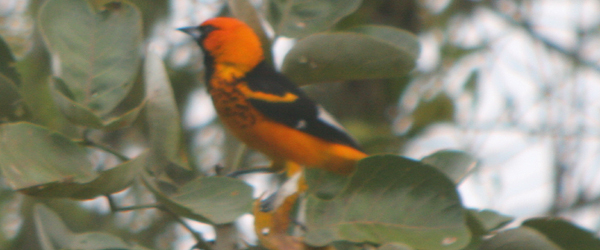
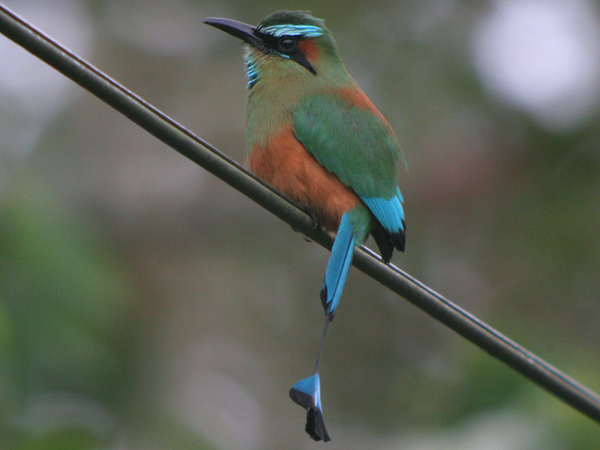
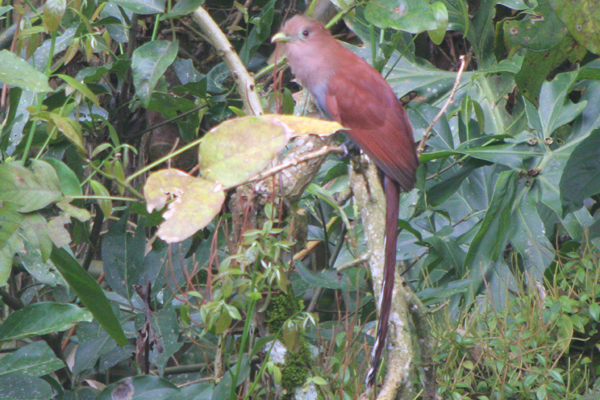
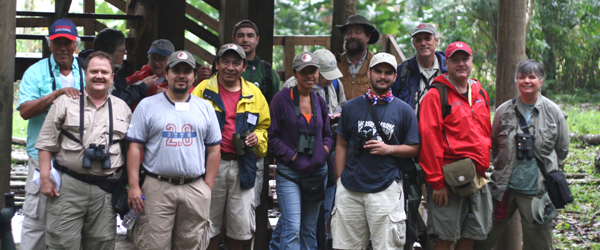
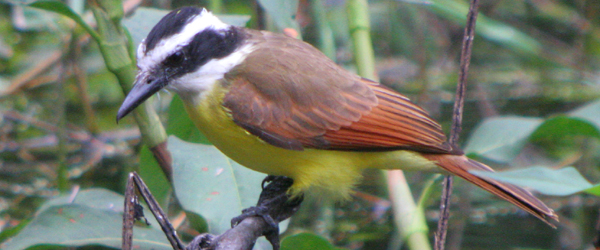











That’s a hot motmot, Corey!
My first time on your blog and I’m really looking forward to hearing about the rest of your trip. Great motmot – you can never get enough of them! – Colene
Hey, that motmot shot is better than any I’ve ever taken 🙂
That’s a spectacular motmot photo–most of mine turn out to be “notnots” instead.
@Mike: Thanks!
@Colene: Welcome to 10,000 Birds! And thanks…
@Nick and Rick: Thanks…and “notnot” made me laugh.
This is all great, Corey! I look forward to reading the rest…
Ooh, sweet motmot. That bird is just ridiculous.
160+ lifebirds….wow, you got in 2 weeks what took me around a year and a half! wow thats some good birding no doubt!…im up to 311/740 myselg, got me a Cape May Warbler on his way back to the states last friday
Anytime you come back or if your friends come down, dont hesitate to give me a ring or an email and ill try my best to get you some good birds or at least reccomend the best sites.
Great to meet you and bird with you…
have fun
Hi all,
Back at home from this extraordinary event where I met so many great people and had the chance to share our great birds with everyone. I think I was the only person (other than Ridgely) who didn`t get a Lifer out of the event. At least it was a Life experience for me organizing it. We`ll hopefully see everyone at the second MBF.
Thanks to everyone for the support and to those who came. Together we`ll continue making Honduras a birding hotspot.
RG
@Pam: Keep coming back…there’s so much to write about!
@Julie: I already miss the motmots.
@Danny: Birding Honduras was great! And it was great to bird with you as well, and if you are ever up in New York get in touch!
@Robert: It just doesn’t seem fair that you didn’t get a lifer. Thanks so much for putting together such a great festival…it was a heck of a life experience for me just participating so I can’t imagine what it was like organizing it! Hopefully, we can get many more birders down to Honduras to have experiences that are just as wonderful!
I liked the poem about the browed motmot its was a very beautiful bird